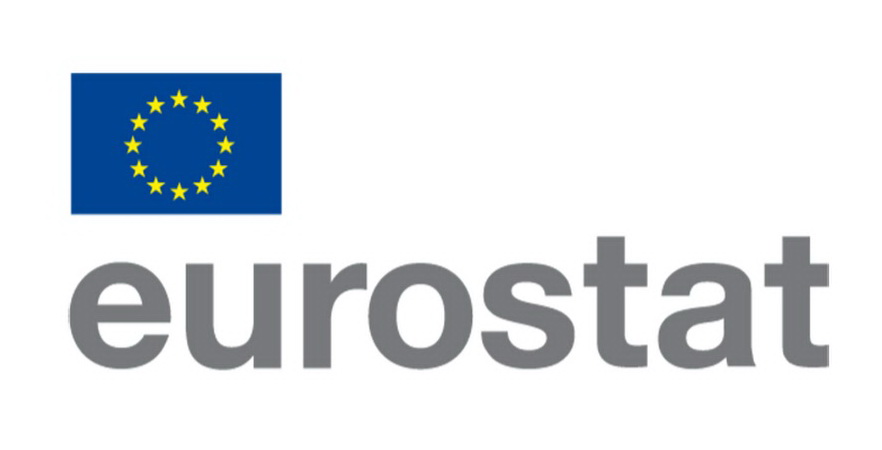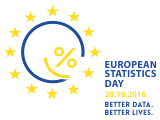| Category: | Economic statistics |
| Area: | National accounts |
| Survey / data collection: | Annual national accounts |
| MONSTAT metadata |
|---|
| Reference metadata |
| 1. Contact |
| 2. Metadata update |
| 3. Statistical presentation |
| 4. Unit of measure |
| 5. Reference period |
| 6. Institutional mandate |
| 7. Confidentiality |
| 8. Release policy |
| 9. Frequency of dissemination |
| 10. Accessibility and clarity |
| 11. Quality management |
| 12. Relevance |
| 13. Accuracy and reliability |
| 14. Timeliness and punctuality |
| 15. Coherence and Comparability |
| 17. Data revision |
| 18. Statistical processing |
| 19. Comment |
Note: For any question on metadata, please contact MONSTAT metadata support.
| 1. Contact Vrh | |
| 1.1. Contact organization: | Statistical Office of Montenegro - MONSTAT |
| 1.2. Contact organization unit: | Annual National Accounts Statistics Department |
| 1.2. Contact organization unit: | IV Proleterske br. 2 , 81000 Podgorica Montenegro |
| 2. Metadata update Top | |
| 2.1. Metadata last certified: | 26 April 2023 |
| 2.2. Metadata last posted: | 25 December 2023 |
| 2.3. Metadata last update: | 26 April 2023 |
| 3. Statistical presentation Top | |
| 3.1. Data description: | National Accounts are compiled of a series of macroeconomic indicators, which provide a comprehensive picture of the economic situation and serve as a basis for economic analysis, forecasting and decision-making. The main aggregate of national accounts is Gross domestic product, which is calculated on annual and quarterly basis. The methodology used is consistent with the System of National Accounts (SNA 2008) and the European System of National Accounts (ESA 2010). Gross domestic product (GDP) measures the total value of goods or services produced by resident institutional units. MONSTAT carries out the calculation of GDP by production and expenditure approach and estimations are independent. The estimation of GDP includes all activities within the production boundary defined by SNA 2008 and ESA 2010 methodologies and covers the entire territory of Montenegro. The results of the estimation are valued at current and constant prices (previous year prices and in average prices of 2010). The basic categories of calculation of GDP by production approach are: 1. Gross output is defined as the market value of all goods and services produced at the level of the national economy. 2. Intermediate consumption at purchases prices is the value of products and services that are transformed, used or consumed in the production process. 3. Gross value added represents the difference between gross output and intermediate consumption. GDP at market prices expresses the value of all goods and services of resident units, i.e. the sum of Gross Value Added by activities and taxes on products less subsidies on products. The basic categories of calculated GDP by expenditure approach are: 1. Household final consumption expenditure classified by the COICOP classification (the fourth level). For the calculation of personal consumption of households Commodity flows method is applied (Commodity flow approach), which represents the balance of all flows of goods and services produced and imported on the one hand and used and exported to the other side. 2. Government consumption can be individual and collective. Individual spending includes expenditures for education, health, social welfare, sport, culture, and recreation. Other expenses of the state are collective consumption (general public services, military and civil defense with ministry, residential and public utilities, etc.). 3. Gross investments in fixed assets. 4. Export and import of goods and services. |
| 3.2. Classification system: | For the purposes of national accounts according to ESA 2010, the following classifications shall be used: - KD2010 classification of activities that complies with NACE Rev. 2 for economic activities, - CPA 2014 for products by economic activity, - COFOG for the functions of the governement, - COICOP for individual consumption by purpose - NUTS 2013 for regional accounts In addition, for the purposes of compilation of GDP aggregates, some additional classifications related to import and export data are used, such as CN - combined nomenclature, HS ? harmonized system, as well as the classification of fixed assets defined by ESA 2010 An overview of classifications is available at: - ESA 2010 Chapter 23 Classifications: Methodology ESA2010 - Eurostat RAMON database classification: Ramon base - Monstat website: Classifications |
| 3.3. Sector coverage: | All sectors defined by Classification of activity 2010 are covered except sector U: Activities of extraterritorial organisations and bodies and households. National accounts describe the overall economy of a country. All units that have their center of predominant economic interest in the economic territory of that country are covered. In addition, national accounts describe economics and according to several other types of aggregation and deaggregation. The two most important levels of desegregation are according to institutional sectors and by the activities of NACE Rev. 2. For each of the detail items, the exhaustive calculation of national account data is required. When it comes to the division by institutional sector, ESA 2010 distinguishes five mutually exclusive domestic institutional sectors: (a) non-financial sector, (b) financial sector, (c) general government sector, (d) household sector; (e) non-profit institutions in the service of households. The five sectors together make up the overall domestic economy. Each sector is also divided into subsectors. As for the division by activity, ESA 2010 applies the NACE Rev.2 classification of activities. Activities can be divided into several levels of detail, for example 3, 10, 21, 38, 64 or 88 activities. Currently, data on national accounts are produced at NACE level A21 as well as at A10 level. |
| 3.4. Statistical concepts and definitions: | Gross domestic product (GDP) measures the total income and total expenditure of the economy. It represents the market value of all final goods and services produced within a country in a given time interval. This interval is usually one year or a quarter (three months). GDP at market prices is the final result of the production activity of resident production units and can be calculated in 3 ways: -Production method; -Expenditure method and -Income method Monstat calculates GDP by production and expenditure approach. According to the production approach: GDP = the sum of gross value added + taxes less subsidies on products. Gross value added is the net result of a weighted-output at basic prices minus intermediate consumption valued at purchasers prices. Output consists of the products manufactured during the accounting period. Intermediate consumption includes the value of goods and services used as inputs in the production process, excluding fixed assets whose consumption is recorded as consumption of fixed capital. Taxes less subsidies on products are taxes (paid) less subsidies (received) per unit of product or service provided. According to the expenditure approach: GDP = final consumption of households + government final consumption (individual and collective) + gross fixed capital formation + changes in inventories + exports - imports Final consumption expenditure of households are expenses (including imputed expenditures) of resident households on individual consumption goods and services (e.g. expenditure on food, clothing and footwear, housing, etc.). These expenditures do not include expenditures of households for the purchase of fixed assets (e.g. dwellings or valuables). Government final consumption expenditure are expenses (including imputed expenditure) of the government sector to the individual and collective consumer services. They are divided into two groups: - The value of goods and services produced by the country and which, by convention, the country consumes - collective consumption (for example: services of the courts, defence, security, protection of environment, etc.), and -Expenditures that the state performs for the purchase of consumer goods and services produced by market producers and which the state, without any transformation, supplying households through social transfers in kind - individual consumption (for example medicament taking on receipt according regular health insurance). -Gross investments in fixed assets are measured by the total amount of the producer acquisition net of disposition of new or used fixed assets during the accounting period. -Net investments in fixed assets are gross investments in fixed assets net of consumption of fixed assets (depreciation). -Changes in inventories are the difference between the level of stocks at the beginning and the end of the year, valued at the average market prices. Inventories can be: materials, work in process, finished goods, and merchandise. Imports and exports of goods and services consist of transactions of goods (purchase/sale, exchange or gift) between resident and non-resident units. Imports and exports of goods and services do not include: - Deliveries of non-resident (foreign) representative offices of resident companies perform to non-residents and deliveries of resident representative offices of non-resident enterprises performs to residents, - Flows of primary income to abroad or from abroad (such as compensation of employees, interest or income from direct investment) and - Sale and purchase of non-produced assets (eg land or patents). External balance of goods and services is the balancing item (balance) of goods and services foreign account. It represents the value of exports of goods and services minus imports of goods and services of rest of the world sector. When the external balance of goods and services in foreign accounts is positive, it means a deficit (deficit) of the national economy in trade of goods and services with foreign countries and vice versa if it is negative, it means a lack for overseas and excess to the national economy. |
| 3.5. Statistical unit: | All economic units, legal and natural persons and households within defined production limits within the System of national accounts - SNA 2008 and European system of accounts - ESA 2010 methodologies. According to the international methodology ESA 2010, national accounts use two types of units and two appropriate ways of observing at the economy: (a) the institutional unit; (b) local unit by type of activity (local KAU). The first type is used to describe income, expenses and financial flows, as well as for balance sheets. The second type of units is used to describe production processes as well as input-output analysis. An institutional unit is an economic entity characterized by the autonomy of decision-making in the activities of its main function. A resident unit shall be deemed to constitute an institutional unit in the economic territory in which it has its centre of predominant economic interest if it has decision-making autonomy and either has a complete set of accounts or is able to compile a complete set of accounts. Local KAU groups all parts of the institutional unit in its capacity as producers located in one location or in closely located locations, and which contribute to the performance of activities at the level of activity (four digits) NACE Rev. 2. An institutional unit consists of one or more local KAUs; local KAU belongs to one and only one institutional unit. |
| 3.6. Statistical population: | The statistical population of a country's national accounts consists of all resident statistical units (institutional units or local KAUs). A unit is a resident unit of a country when it has a center of predominant economic interest in the economic territory of that country, i.e. when it engages for a longer period (one year or more) in economic activities in that territory. The calculation of national accounts data includes all statistical units, thus ensuring exhaustiveness in the calculation. |
| 3.7. Reference area: | The reference area for national accounts is the overall economy of Montenegro. The total economy of a country can be divided into regions. The NUTS classification provides a single, uniform division of the economic territory of EU member states. According to the NUTS classification, Montenegro is one region at all 3 NUTS levels. |
| 3.8. Time coverage: | Annual GDP data are available since 2000. |
| 3.9. Base period: | GDP in constant prices uses the prices from the previous year so that the base year is the previous year. Chain-linked data is regularly produced for the base year 2010, the production and expenditure approach. |
| 4. Unit of measure Top | |
| In addition to the data expressed in current prices, the data of national accounts are also expressed in the prices of the previous year and in the chainlinked volume measures, in thousands of EUR. In addition, it is possible to perform growth rates and indices, and various other units of measure can be applied (e.g. percentages of share, per capita data, data expressed in purchasing power standards). | |
| 5. Reference period Top | |
| Calendar year | |
| 6. Institutional mandate Top | |
| 6.1. Legal acts and other agreements: | The Law on Official Statistics and Official Statistical System (Official Gazette of Montenegro No 18/12 and 47/19) defines provisions for collection, processing, and dissemination of data. The Law provides to the Statistical Office legal powers to collect and access the data necessary for the implementation of Programme and Annual Plan. The Law gives a priority to the use of administrative data and right of access to individual data that are a result of survey of other official statistical producers. As an annex to legal provisions, Statistical Office has signed several memoranda on cooperation with administrative data providers.National accounts are compiled in accordance with the European System of Accounts (ESA 2010), which is published in the Official Journal of the European Commission as Annex A to Regulation (EU) No 1306/2010. The ESA 2010 Data Transmission Programme is covered by Annex B. ESA 2010 takes the form of regulation and contains: methodology (Annex A) on common standards, definitions, classifications and accounting rules to be used to draw up accounts and tables on comparable basis a data transmission programme (Annex B) setting the dead lines by which Member States submit accounts and tables to Eurostat Several separate acts, often related to classifications such as: NACE Rev.2, CPA 2014, COFOG, COICOP, NUTS 2013 On the Eurostat website you can find several legal acts relevant to the statistics of national accounts in the section "National accounts", link: Legislation When preparing and defining the Annual Plan, the Statistical office adheres to the statistical requirements defined in the Statistical Compendium of the European Commission (link: Compendium ). |
| 6.2. Data sharing: | Signed agreement on cooperation with the official statistical producers: 1. Customs Administration 2. Tax Administration 3. Ministry of Finance 4. Central Bank of Montenegro 5. Trilateral agreement (MONSTAT, Ministry of Finance, and Central Bank of Montenegro) International institutions: 1. EUROSTAT 2. UN organizations 3. IMF 4. World Bank |
| 7. Confidentiality Top | |
| 7.1. Confidentiality - policy: | Articles 53-60 of the Law on Official Statistics and Official Statistical System (Official Gazette of Montenegro No 18/12 and 47/19) provide a framework for protection, use, and transmission of confidential data. Statistical office has produced two compre |
| 7.2. Confidentiality - data treatment: | In accordance with the Law on Official Statistics and Official Statistical System, Chapter XIII, confidentiality and protection of data necessary for official statistics, Articles from 54 to 61, is defined by the legislative procedure relating to the conf |
| 8. Release policy Top | |
| 8.1. Release calendar: | The Law on Official Statistics and Official Statistical System (Official Gazette of Montenegro No 18/12) stipulates that official statistical producers prepare, update, and publish Statistical Release Calendar. It is published on the website of Statistical Office not later than 20 December for the next year, for all official statistical producers that includes date of releasing statistical data. Any change in date of releasing in the Calendar is published in advance in accordance with the Procedure on Unplanned Revisions. |
| 8.2. Release calendar - access: | The calendar of publication of statistical data is available at the following link: http://www.monstat.org/eng/page.php?id=12&pageid=12 |
| 8.3. User access: | General aim of official statistical producer is to meet the needs of users, and to make an access to statistical data to users in an understandable manner, simultaneously and under the same conditions. Statistical Office is obliged to produce and disseminate official statistics in objective, transparent and professional manner, so that all users are equally treated. |
| 9. Frequency of dissemination Top | |
| Annual data on national accounts shall be published at least once a year: when data for the new year is added. However, depending on country practice and audit policy, annual data may also be published more frequently, e.g. publication of preliminary data at the beginning of a calendar year and revised later in the calendar year. Annual data on national accounts for Montenegro are published once a year, t +9 months. The data shall be submitted to Eurostat in accordance with the defined deadline of the ESA 2010 transmission programme. In addition to the requirement for transmission of final annual data (t+9), it is required to send preliminary annual data as the sum of quarterly preliminary data for that year (t+2). | |
| 10. Accessibility and clarity Top | |
| 10.1. News release: | Releases on annual gross domestic product for Montenegro, link: https://www.monstat.org/eng/page.php?id=163&pageid=19 Dissemination of data under the General Data Dissemination Standard established by the IMF (eGDDS), link: http://www.monstat.org/NSDP/National Summary Data Page (NSDP).htm In addition to publishing press releases and other publications, information about national accounts may be published through social networks. Statistics office of Montenegro publishes information via twitter: twitter.com/monstat_me |
| 10.2. Publications: | Statistical Office publishes the following regular publications: 1. Monthly Statistical Review, 2. Statistical Yearbook, 3. Montenegro in Numbers, 4. Annual Statistics of Transport, Storage and Connections, 5. Number and Structure of Business Entities. In addition to the above regular ones, Statistical Office publishes also additionally publications. Some of the most important additional publications are as it follows: 1. Women and Men in Montenegro, 2. Children in Montenegro, 3. The most often used statistical data. All publication published by Statistixal Office are available at the following link: http://monstat.org/eng/publikacije.php |
| 10.3. Online database: | Releases on GDP are present at the website of MONSTAT, part National accounts. In part Data, in form of Excel tables there are GDP from 2006. In addition, on website of MONSTAT-a it is available online database, link: http://monstat.org/eng/pxweb.php |
| 10.4. Micro-data access: | The Law on Official Statistics and Official Statistical System (Official Gazette of Montenegro No 18/12) regulates rules under which external users can obtain an access to individual data for needs of research. Article 58 defines types of scientific and research organizations that can obtain such data. Providing individual data without identifier is possible only upon a written request of scientific and research institutions, with purpose of performing scientific and research activities as well as international statistical organizations and statistical producers from other countries. Research entity signs the agreement with Statistical Office, and it signs the statement on respecting the confidentiality principle. Official statistical producers keeps a separate records on users and purpose of using the statistical data given to these users. |
| 10.5. Other: | It is possible to find on the link data, methodology, releases, publications: http://www.monstat.org/eng/page.php?id=19&pageid=19. Dissemination of data in the frame of enhanced General Data Dissemination Standard which is established by IMF (eGDDS), link: http://www.monstat.org/NSDP/National%20Summary%20Data%20Page%20(NSDP).htm |
| 10.6. Documentation on methodology: domain: | International recommended methodology for the calculation of National Accounts is the System of National Accounts 2008 (SNA 2008), which provides a detailed theoretical framework, while for the EU countries the methodology is prescribed by the European System of National Accounts (ESA 2010) which is fully consistent with the SNA 2008 and adapted to the European environment and practices. The legal obligation of each EU Member States is to respect the ESA 2010 in their statistical practices. Link: http://ec.europa.eu/eurostat/web/products-manuals-and-guidelines/-/KS-02-13-269 |
| 10.7. Quality documentation: | The Law on Official Statistics and the Official Statistical System ( Official Gazette of Montenegro No. 18/12 and 47/19) defines the commitment to quality, which ensures that producers of official statistics in Montenegro work and cooperate in accordance with international principles of quality of the statistical system. Development Strategy and Programme of Official Statistics for 2019-2023 define the objectives of development. One of objectives is quality management via monitoring the implementation of European Statistical Code of Practice. In accordance with the ESS Quality Declaration, Article 338 of the Treaty on the Functioning of the EU, Regulations 759/2015 and 223/2009 and the European Statistics Code of Practice, the following documents are adopted: 1. Quality Strategy of the Statistical Office 2. Guide for the implementation of the Quality Strategy in the Statistical Office; 3. Implementation plan |
| 11. Quality management Top | |
| 11.1. Quality assurance: | Statistical Office has chosen the implementation of elements of TQM (Total Quality Management) model that foster development and improvement of functioning of: - Institution, - Official statistical result production, and - Individual. Within middle-term deadline, Statistical Office has chosen the TQM implementation through the following objectives: 1. Strong commitment to users and other interested parties, 2. Quality statistical processes and products, 3. Professional orientation of staff members, 4. Constant improvements, 5. Reduction of overburden of reporting units. |
| 11.2. Quality assesment: | The document 'GNI Inventory' serves as a basis for assessing the quality of the results. |
| 12. Relevance Top | |
| 12.1. User needs: | International users: - Eurostat, - World Bank, - UN organizations, - International Monetary Fund. National users: - Ministries and other public administration bodies, -Local government, and Other local government bodies, - Central bank, - Non-governmental organizations, - Students, - Researchers, - Media. |
| 12.2. User satisfaction: | The Statistical Office has adopted the Quality Management Strategy, the Guidebook to the Implementation of the Quality Management Strategy, as well as the Plan for the Implementation of the Quality Policy. In order to measure the degree to which fulfills obligations towards users and within the new quality policy, the Statistical Office conducted User satisfaction survey. The results of the survey are available on the Statistical Office website, link: https://www.monstat.org/cg/page.php?id=1625&pageid=1625 |
| 12.3. Completeness: | Annual national accounts provide a basic view of the macroeconomic aggregates - Gross domestic product obtained by applying production and process methods. Gross domestic product by income approach are not available. |
| 13. Accuracy and reliability Top | |
| 13.1. Overall accuracy: | Not relevant |
| 13.2. Sampling error: | Not relevant |
| 13.3. Non-sampling error: | Not relevant |
| 14. Timeliness and punctuality Top | |
| 14.1. Timeliness: | Data are published in accordance with the Annual Plan of Statistical Survey and Statistical Release Calendar, end of september of current year for the previous year data. |
| 14.2. Punctuality: | Good statistical practice requires that the dates on which national accounts data become available are pre-announced and that the pre-announced publication dates are met. National accounts data transmissions in the framework of the ESA 2010 transmission programme should be punctually delivered to Eurostat at the timeliness defined in the transmission programme (or before). Quarterly data are published in accordance with the Annual Plan of Statistical Survey and Statistical Release Calendar in the 75 days after end of the reference quarter. Annual data are published in accordance with the Annual Plan of Statistical Survey and Statistical Release Calendar in the end of september of current year for previous year, respectively deadline for data transmission by Data transmission programme (t+9). |
| 15. Coherence and Comparability Top | |
| 15.1. Comparability - geographical: | By applying Regulation (EC) No 549/2013 which prescribes the application of ESA 2010 methodology geographical comparability of data between Montenegro and other countries is enabled. Geographical comparison around the world is possible because most non-European countries apply the SNA 2008 guidelines and SNA 2008 is in line with ESA 2010. In accordance with the Nomenclature of Territorial Units for Statistics (NUTS) and the Data Transmission Programme (ESA 2010), the Statistical office submits data on quarterly and annual GDP to Eurostat and at all three levels of NUTS classification the territory of Montenegro is considered to be a single statistical region. |
| 15.2. Comparability over time: | From 2000 to 2005, the data are available in accordance with the ESA 95 methodology by the NACE Rev.1.1.classification. From 2006 onwards data are available according to the ESA 2010 methodology and by NACE Rev.2 classification. As the data for all reference periods are compiled in accordance with the requirements of ESA 2010, the data on national accounts can be fully time-comparable. Also, in the case of fundamental changes in methods, improvement of data sources or the emergence of new data sources, classifications, revisions of long-standing series are carried out, which usually go far back in time in order to form a new complete time-comparable data series. Using a common framework, the European System of Accounts ESA 2010, data for Montenegro can be compared over time, for the annual time series 2006-2021. |
| 15.3. Coherence - cross domain: | In certain cases, data from other areas of economic statistics can be used to cross-check. |
| 15.4. Coherence - internal: | After publishing annual GDP data quarterly data are revised to be in line with annual data. |
| 17. Data revision Top | |
| 17.1. Data revision - policy: | Quarterly national accounts data are subject to continuous revision when new inputs become available. These audits are called routine audits and imply regular audits of data. Less commonly, extraordinary audits (called benchmark revisions) are the result of major changes in data sources, classifications, or methodologies. For example, when changing from ESA95 to ESA 2010, there was an audit of part of the data. Preliminary data are revised at the time of availability of annual data. The Statistics Authority has adopted an audit policy and it is available on the website: http://www.monstat.org/eng/page.php?id=1411&pageid=1411 |
| 17.2. Data revision - practice: | Data from the National Accounts are subject to revisions in case of changes in international methodologies or if new data sources become available. National Accounts represent a wide range of data on different areas that are integrated into the National Accounts system so that a change in one area will have an impact elsewhere, and therefore the revision of one part of National Accounts can lead to a revision of the data of the entire system of National Accounts. While revisions should be seen as a process for progressively improving the quality of national accounts, e.g. better sources and/or methods are becoming available, the availability of revised information is a key element for understanding national accounts data and revision arising between releases. |
| 18. Statistical processing Top | |
| 18.1. Source data: | The main data source for the calculation of GDP are financial statements of companies, banks, insurance companies, government sector, local governments, social security founds, entrepreneurs and of the lump obtained from the above sources data. All the above sources represent an administrative data source. Data obtained from statistical surveys are also used. |
| 18.2. Frequency of data collection: | Data is collected once a year. |
| 18.3. Data collection: | Data collection is very country-specific and also varies according to the nature of the data source, e.g. administrative databases, tax records, administrative registers, surveys, financial statements, etc. The department of national accounts usually does not just collect data, but collects it from other departments or institutions. National accounts combine data from many sources. Data collection techniques are different, depending on available sources of information, timeliness of data release and other factors. |
| 18.6. Adjustment: | Not relevant. |
| 19. Comment Top | |
| None | |







